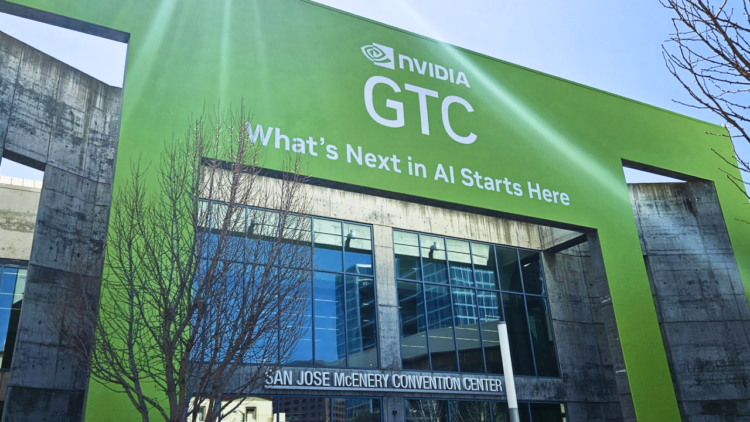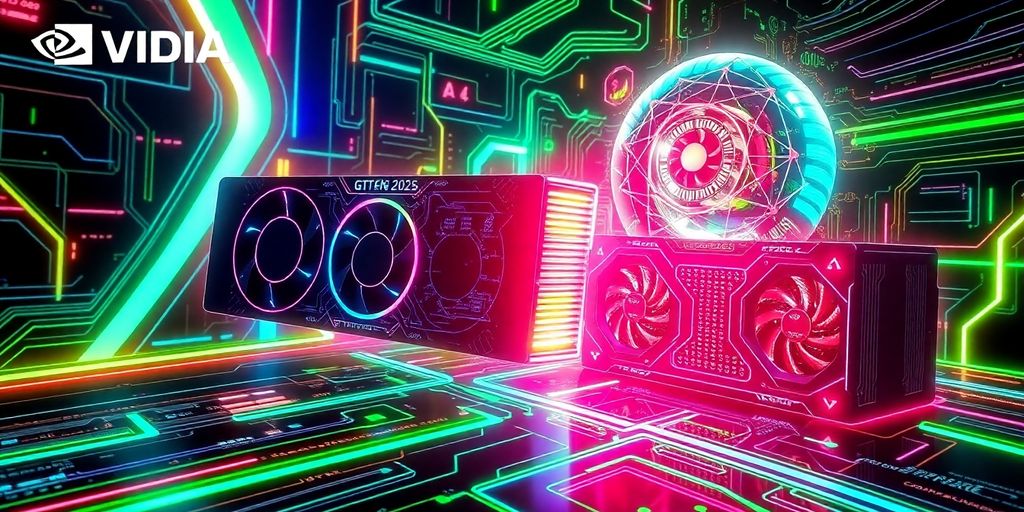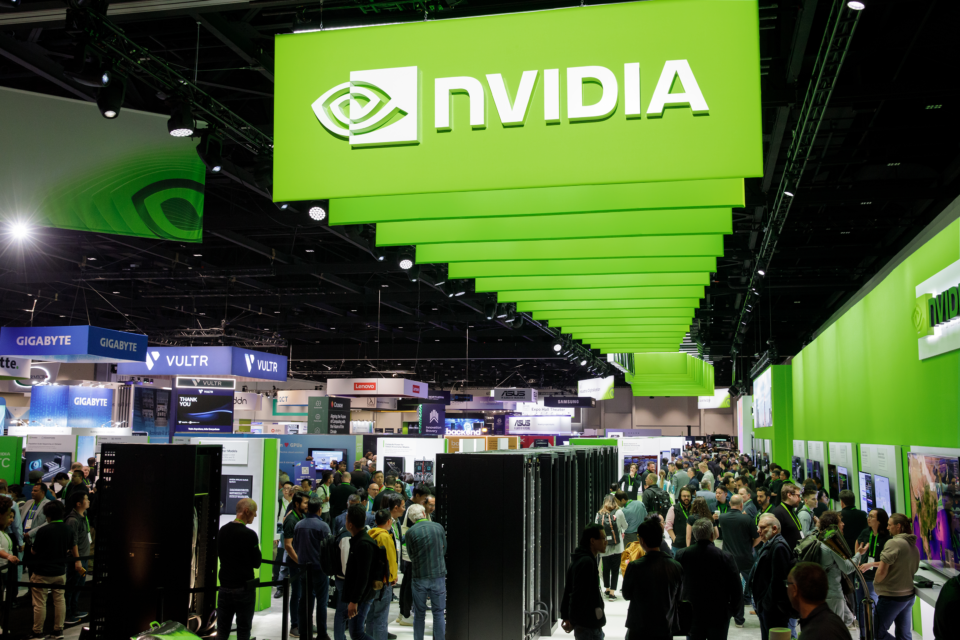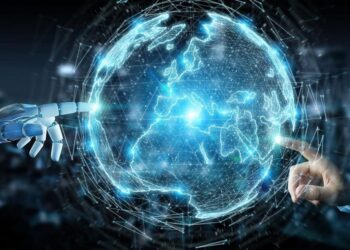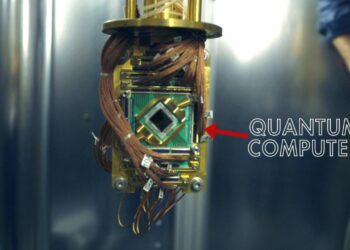The NVIDIA GTC 2025 conference has once again captured the attention of the global tech community, positioning itself as the epicenter for breakthrough AI technology and deep learning innovations. This year’s event, held at a time when artificial intelligence is reshaping industries and redefining the potential of computing, showcased NVIDIA’s relentless drive to push the boundaries of what is possible. Attendees from around the globe, including industry leaders, researchers, developers, and entrepreneurs, gathered to witness firsthand how NVIDIA’s ecosystem is evolving and influencing sectors as diverse as healthcare, finance, automotive, and scientific research.
In this comprehensive article, we provide an in-depth look at the major highlights of GTC 2025. We examine the innovations in GPU computing, the state-of-the-art advancements in AI and deep learning, and the emerging trends that promise to revolutionize the future of technology. Whether you are an AI enthusiast, a technology professional, or simply curious about the future of computing, this detailed analysis will serve as an essential resource to understand the groundbreaking ideas presented at this year’s conference.
Unveiling the GTC 2025 Experience
NVIDIA’s annual GPU Technology Conference (GTC) has long been a platform for showcasing next-generation hardware and innovative software solutions that empower developers and researchers. At GTC 2025, NVIDIA not only unveiled new hardware products but also presented novel software frameworks and integrations designed to streamline and accelerate AI research. The keynote sessions, technical talks, and hands-on demos offered a glimpse into a future where intelligent systems are seamlessly integrated into everyday life.
Key Themes and Objectives
The overarching focus of GTC 2025 revolved around several core themes:
-
Advancement in AI Capabilities: Emphasizing how AI can transform industries by enhancing efficiencies, enabling rapid data processing, and powering next-generation applications.
-
Acceleration of Deep Learning: Highlighting innovations that make the training and deployment of deep learning models faster, more scalable, and more cost-effective.
-
Innovative GPU Architectures: Introducing new GPU designs that provide unprecedented computational power, essential for processing complex models and massive datasets.
-
Integration of Software and Hardware: Demonstrating how NVIDIA’s new platforms and tools enable seamless integration of high-performance computing in various sectors.
-
Collaborative Ecosystem: Reinforcing partnerships with leading organizations and startups to foster research, enhance products, and drive technological adoption worldwide.
Major Breakthroughs in AI and Deep Learning
One of the most exciting aspects of GTC 2025 was the revelation of significant advancements in the fields of AI and deep learning. NVIDIA’s research and development teams have worked tirelessly to refine the processes that underlie modern intelligent systems. These improvements not only optimize performance but also pave the way for new applications across numerous industries.
Advancements in Model Training and Inference
At the conference, experts demonstrated a series of upgrades to the model training pipelines. These improvements allow machine learning models to be trained faster while maintaining high accuracy and efficiency. Key innovations include:
A. Optimized Algorithms: NVIDIA introduced novel optimization techniques that drastically reduce the computational time required for training complex neural networks. By fine-tuning learning rates and incorporating adaptive gradient methods, these algorithms are setting new standards for efficiency.
B. Enhanced Data Processing Frameworks: The integration of cutting-edge data ingestion and processing tools has streamlined the AI pipeline. These frameworks ensure that models receive clean, structured data, thereby enhancing predictive performance.
C. Reduction in Energy Consumption: As the demand for AI applications grows, energy efficiency becomes critical. NVIDIA’s innovations focus on reducing the energy footprint of deep learning computations without sacrificing speed or precision.
D. Real-Time Inference Capabilities: Improved inference engines have been deployed, enabling AI systems to deliver instantaneous responses even in complex scenarios. This breakthrough is essential for applications requiring rapid decision-making, such as autonomous vehicles and real-time fraud detection in finance.
Software Tools and Frameworks
NVIDIA’s software ecosystem received a substantial upgrade, making it easier for developers to create, deploy, and optimize AI applications. The conference highlighted several new tools:
A. AI Development Kits: Enhanced AI development kits simplify the creation of custom models. They are designed to integrate effortlessly with existing development environments and support various programming languages.
B. Simulation and Modeling Platforms: To reduce the time and cost associated with traditional model development, NVIDIA unveiled platforms that allow developers to simulate various scenarios and test models in virtual environments before deployment.
C. Collaborative Integration: The new frameworks support seamless collaboration between researchers and developers. This integration fosters faster innovation and ensures that cutting-edge research translates effectively into real-world applications.
D. Automated Tuning and Optimization: AI platforms now include automated tools that adjust model parameters dynamically. This level of automation minimizes human error and streamlines the training process, resulting in more robust AI solutions.
Innovations in GPU Computing
The backbone of NVIDIA’s success lies in its continuous innovation in GPU technologies. GTC 2025 placed a significant emphasis on how new GPU architectures are set to revolutionize computational capabilities in both research and commercial applications. The advanced GPUs are not just faster; they are smarter, more adaptable, and highly efficient.
New GPU Architectures
NVIDIA unveiled its latest series of GPUs, which promise to dramatically alter the landscape of high-performance computing. These new GPUs are engineered with state-of-the-art technologies, including:
A. Increased Parallelism: The latest GPUs feature an architecture that maximizes parallel processing capabilities. This allows for simultaneous execution of multiple tasks, significantly speeding up computations involved in deep learning and AI applications.
B. Improved Memory Architecture: Enhanced memory bandwidth and faster memory access times contribute to reduced latency in data processing. This improvement is critical when dealing with large datasets and real-time computations.
C. AI-Specific Enhancements: Some of the new GPU models are specially designed for AI tasks, incorporating dedicated tensor cores. These cores optimize matrix operations crucial for deep learning, resulting in improved efficiency and performance.
D. Energy-Efficient Designs: With sustainability in mind, these GPUs are designed to be more energy-efficient. They incorporate advanced cooling solutions and power management technologies, which help minimize environmental impact while maximizing computational output.
Integration with Cloud Computing
The fusion of advanced GPU computing with cloud-based solutions was another focal point of the conference. NVIDIA outlined its strategy for leveraging the power of cloud computing to deliver scalable AI solutions on demand. This integration presents several key benefits:
A. Scalable Resources: Cloud platforms enable the dynamic allocation of GPU resources, ensuring that businesses can scale their computational needs according to demand.
B. Cost Efficiency: By migrating heavy computational tasks to the cloud, organizations can reduce the financial burden of maintaining on-premise high-performance computing infrastructures.
C. Enhanced Flexibility: Cloud-based GPU services provide unparalleled flexibility, allowing developers to experiment with different configurations and easily deploy updates.
D. Global Accessibility: With cloud integration, advanced GPU technologies are accessible to a wider audience, including startups and educational institutions that might otherwise be limited by budget constraints.
Research Collaborations and Industry Partnerships
Collaboration remains a cornerstone of innovation in the tech industry, and GTC 2025 demonstrated that NVIDIA continues to forge strategic partnerships with leaders across various domains. These collaborations are instrumental in translating research breakthroughs into practical applications that benefit society at large.
Building an Ecosystem of Innovation
NVIDIA’s approach to collaboration is multi-faceted, involving partnerships with academic institutions, research labs, tech giants, and emerging startups. The conference shed light on several collaborative projects that promise to lead the way in AI innovation:
A. Academic Partnerships: NVIDIA has strengthened its ties with universities and research organizations, funding cutting-edge research projects and providing access to its state-of-the-art computing platforms. This collaboration drives academic research forward and fosters the development of new AI algorithms.
B. Industry Alliances: By partnering with global tech leaders, NVIDIA is able to integrate its technologies into a variety of applications. For instance, alliances with companies in the automotive sector are accelerating the development of autonomous driving systems.
C. Startup Incubation: Recognizing the potential of nascent ideas, NVIDIA has expanded its startup incubation programs. These initiatives offer technical support, funding, and mentorship, giving rise to innovative solutions that leverage AI to solve real-world problems.
D. Open-Source Communities: NVIDIA actively contributes to open-source projects, encouraging developers worldwide to collaborate on improving AI frameworks and tools. This participatory approach not only accelerates technological progress but also helps build a diverse and dynamic community of innovators.
Highlight on Notable Collaborations
Several high-profile collaborations were highlighted during GTC 2025, each addressing unique challenges and opportunities:
-
Healthcare Innovations: NVIDIA is partnering with leading healthcare institutions to develop AI-powered diagnostic tools. These tools leverage deep learning to analyze medical images and predict disease progression, significantly improving patient outcomes.
-
Automotive Advancements: Collaborations with automotive manufacturers focus on enhancing the safety and efficiency of autonomous vehicles. By integrating NVIDIA’s GPU technologies with advanced sensor systems, these projects are paving the way for safer roads and smarter vehicles.
-
Financial Technology: In the finance sector, NVIDIA’s solutions are being used to detect fraudulent transactions and predict market trends in real time. The enhanced computational power of NVIDIA’s GPUs is critical for processing vast amounts of financial data with precision and speed.
-
Environmental Research: NVIDIA is also involved in projects aimed at combating climate change. By enabling sophisticated climate models and real-time data analysis, the company is contributing to more accurate predictions and better-informed environmental policies.
Transforming Industries Through AI Innovation
The impact of the innovations unveiled at GTC 2025 extends far beyond the realm of computing. They promise to transform entire industries by driving efficiency, enhancing user experiences, and opening up new economic opportunities.
Impact on Healthcare
In healthcare, the application of AI is proving to be revolutionary. The advancements in deep learning and GPU computing have led to:
A. Improved Diagnostics: AI-powered diagnostic tools can analyze medical images with remarkable accuracy, allowing for early detection of conditions such as cancer, neurological disorders, and cardiovascular diseases. The rapid processing capabilities of NVIDIA’s technology enable real-time analysis, which is crucial in critical care scenarios.
B. Personalized Medicine: With the help of advanced data analytics and machine learning models, doctors are now better equipped to design personalized treatment plans. This approach tailors medical care to the individual patient’s genetic makeup and lifestyle, thereby improving treatment outcomes.
C. Efficient Drug Discovery: The use of AI in analyzing biochemical data is accelerating the drug discovery process. By simulating molecular interactions at unprecedented speeds, NVIDIA’s GPUs are enabling researchers to identify promising compounds faster than ever before.
D. Robust Telemedicine Platforms: Enhanced computing power facilitates the development of telemedicine applications that can diagnose and monitor patients remotely. These platforms are particularly valuable in rural or underserved areas where access to specialized healthcare is limited.
Advancements in the Automotive Sector
The automotive industry is undergoing a rapid transformation, spurred by innovations in AI and GPU technology. Some of the key developments include:
A. Autonomous Driving: NVIDIA’s cutting-edge AI solutions are at the heart of autonomous driving systems. These systems integrate data from cameras, sensors, and LiDAR technologies to create comprehensive maps in real time, enabling vehicles to navigate complex environments safely.
B. Smart Infotainment Systems: With enhanced computational capabilities, modern vehicles now offer sophisticated infotainment and connectivity systems. These systems deliver personalized content, navigation, and safety updates, improving the driving experience and overall road safety.
C. Predictive Maintenance: AI models can predict vehicle malfunctions before they happen, allowing for proactive maintenance and reducing downtime. This not only saves costs for fleet operators but also enhances passenger safety.
D. Energy Management: With the growing popularity of electric vehicles, efficient energy management systems are critical. NVIDIA’s advancements in GPU computing support the development of algorithms that optimize battery usage and extend driving range.
Revolutionizing Finance and Retail
The finance and retail sectors are also set to benefit immensely from the innovations highlighted at GTC 2025. Modern AI applications have the potential to:
A. Enhance Fraud Detection: Advanced machine learning algorithms can detect unusual transactions faster, significantly reducing fraud in online and card-based payments.
B. Optimize Customer Experiences: Retailers are leveraging AI to analyze consumer behavior, tailoring marketing strategies, improving product recommendations, and ultimately enhancing the customer journey.
C. Data-Driven Decision Making: Financial institutions use AI to analyze market trends and make informed decisions. The integration of NVIDIA’s GPU technology facilitates the rapid processing of financial data, yielding real-time insights that can dramatically influence investment strategies.
D. Automation of Routine Tasks: Both finance and retail sectors benefit from the automation of routine tasks, freeing up human resources for more complex problem-solving and customer interaction.
Looking Ahead: Future Perspectives
The advancements and strategic collaborations showcased at NVIDIA GTC 2025 are only a glimpse of what the future holds. As industries continue to embrace AI, the intersection of advanced GPU computing and intelligent systems is set to create transformative changes. Several factors point toward an even more connected, efficient, and innovative technological ecosystem in the coming years.
Emerging Trends and Innovations
A close analysis of GTC 2025 reveals several trends that are likely to define the future:
A. Edge Computing Integration: There is a growing shift toward bringing AI capabilities closer to end users. Edge computing minimizes latency by processing data locally, rather than relying solely on centralized cloud infrastructures. This evolution is particularly significant for autonomous vehicles, smart cities, and IoT devices.
B. Expansion of AI Democratization: Tools and platforms presented at the conference are designed to empower a broader audience of developers and researchers. This democratization of AI aims to lower the barrier to entry for innovative projects, fostering an environment where creative applications can flourish.
C. Growth of Hybrid Cloud Environments: The combination of on-premises computing and cloud infrastructures is emerging as the norm for enterprises seeking both flexibility and control. NVIDIA’s solutions are ideally positioned to support such hybrid models, ensuring robust performance in dynamic computing environments.
D. Sustainable Computing Initiatives: With energy efficiency at the forefront, emerging technologies are geared toward reducing the environmental impact of high-performance computing. NVIDIA’s energy-efficient GPUs and cutting-edge cooling technologies set a precedent for sustainable innovation in the tech industry.
E. Increased Focus on Cybersecurity: As more sectors adopt AI solutions, the need for robust cybersecurity measures becomes paramount. Future innovations will likely integrate advanced security protocols at the hardware level, ensuring that data processing remains secure even in the face of emerging threats.
Detailed Analysis of Technical Presentations
A significant portion of GTC 2025 was dedicated to detailed technical presentations that provided insights into the latest research, development methodologies, and case studies from various sectors. These sessions were led by NVIDIA’s top engineers, esteemed researchers, and industry experts who discussed topics ranging from algorithmic improvements to practical deployment of AI systems in real-life scenarios.
Notable Technical Sessions Included
A. The Future of Neural Networks: One session offered an extensive exploration of evolving neural network architectures. The discussion centered on novel techniques that reduce overfitting while enhancing the ability of models to generalize from data.
B. Real-Time Data Processing: Presenters demonstrated how state-of-the-art GPUs can handle massive data streams in real time. The applications highlighted ranged from live video analytics to high-frequency trading platforms, showcasing NVIDIA’s prowess in delivering low-latency solutions.
C. Collaborative Software Innovations: This session highlighted the seamless integration of hardware and software systems designed to improve development efficiency. Panels discussed the emerging trend of co-designing algorithms and hardware to optimize performance.
D. Case Studies in Autonomous Systems: Industry practitioners shared real-world examples of how AI-driven systems powered by NVIDIA technology are transforming industries such as logistics, urban planning, and autonomous transportation networks.
E. Security and Trust in AI Systems: Addressing cybersecurity concerns, one panel discussed methodologies to secure AI systems at every level—from data collection and processing to model deployment. The insights provided by experts emphasized the need for robust security frameworks in an increasingly digital world.
The Ripple Effect: How GTC 2025 Shapes the Global Tech Landscape
The influence of NVIDIA GTC 2025 transcends the immediate realm of technology, impacting various facets of the global economy and society at large. As governments, enterprises, and research institutions align their strategies around AI and advanced computing, the benefits of these innovations are set to create a ripple effect that enhances productivity, safety, and quality of life.
Societal Implications
A. Advancements in Education: AI-powered platforms are transforming education by personalizing learning experiences and making high-quality educational content accessible on a global scale. NVIDIA’s innovative tools are being integrated into academic curricula, enabling students to engage with real-time data analysis and hands-on coding practices.
B. Economic Growth and Job Creation: While there is often concern about AI displacing traditional jobs, the advancements showcased at GTC 2025 also promise to create new opportunities. Enhanced productivity through AI-driven automation is leading to the birth of new industries and the evolution of existing roles, driving overall economic growth.
C. Healthcare Improvements: AI technologies are integral to enhancing patient outcomes, especially in remote and under-resourced areas. The improvements in diagnostic accuracy and treatment personalization are revolutionizing healthcare delivery.
D. Environmental Impact: With sustainable computing initiatives gaining traction, innovations at NVIDIA are contributing to a reduction in energy consumption and a more efficient use of resources. This has significant implications for the global efforts to combat climate change.
Economic and Industrial Transformation
As companies across various sectors adopt AI solutions, the industrial landscape is being reshaped in profound ways. Major transformations include:
A. Digital Transformation of Traditional Industries: Legacy industries are rapidly integrating AI and advanced computing to enhance operational efficiencies and generate new revenue streams.
B. Increased Investment in Research and Development: The successes demonstrated at GTC 2025 have spurred increased funding and interest in AI research, paving the way for continuous improvements and novel applications.
C. Global Competitiveness: As nations invest in cutting-edge technology infrastructure, the race for technological supremacy intensifies. NVIDIA’s innovations contribute significantly to positioning countries at the forefront of the global tech market.
D. Cross-Industry Collaborations: The convergence of technology sectors is prompting joint ventures and partnerships that were once considered unlikely. This interdisciplinary approach is accelerating the pace of innovation, from smart agriculture to quantum computing applications.
Conclusion
NVIDIA GTC 2025 has once again proven to be a watershed moment in the evolution of artificial intelligence and high-performance computing. The confluence of advanced GPU architectures, enhanced deep learning techniques, and a robust ecosystem of collaborations has set a new benchmark for what is achievable in technology. As the innovations presented at the conference begin to permeate industries across the globe, the future is poised for a transformation that will redefine the very fabric of our digital existence.
The strides made at GTC 2025 are not merely incremental improvements; they represent a paradigm shift that positions AI at the core of global innovation. With applications spanning healthcare, automotive, finance, and beyond, NVIDIA’s vision is one where technology empowers humanity, creating smarter, safer, and more efficient ways to navigate an increasingly complex world.
As we look to the future, the developments unveiled during this year’s conference serve as a powerful reminder that the relentless pursuit of innovation, coupled with collaborative efforts across sectors, is the driving force behind the extraordinary progress in the field of artificial intelligence.

